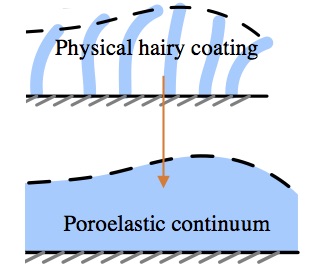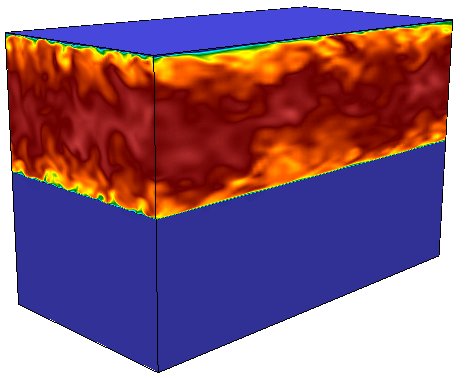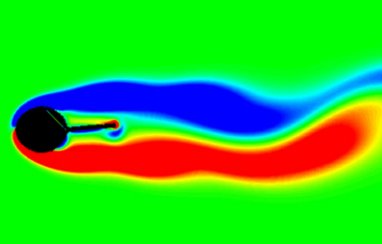Research: Fluid dynamics
Multiscale homogenization
 |
Evolution has bestowed a form of flow control upon flying animals that utilizes self-adaptive compliant hairy coatings (feathers, hairs and other filament-like structures). This has attracted the attention of researchers only recently; the physical mechanisms with which the flying animals control the flow around them using these coatings are far from understood. We derive tractable mathematical models to simulate fluid flows interacting with the hairy coatings. Using multiscale homogenization,our aim is to derive an equivalent continua that encompasses dominant physical features of the coating. This model is currently used to devise passive control mechanisms to manipulate turbulent flows. |
Nature-inspired flow control
 |
We perform multiscale direct numerical simulations of turbulent flow over nature-inspired porous coatings. The objective of this work is to analyse how the microstructural geometric details of the porous media affects the turbulent energy production, and hence the shear stresses on the wall. Emphasis will also be on detailed analysis of energy-containing large scale coherent structures, to relate these turbulent structures to the observed statistical quantities. The overall aim of this work is to examine if we can infuse the design of coatings found in nature with the riblet structures to achieve large drag reduction. |
Insect Aerodynamics
 |
Insect flight can't be explained by conventional steady state aerodynamics theories. Insects largely rely on unsteady aerodynamic principles to augment the lift forces generated on their flapping wings. Several CFD studies and experiments conducted over the dynamically scaled robotic models of fruitfly have significantly improved our understanding of insect flight. The objective of this work was to investigate the aerodynamics of dragonfly, which exhibits wing motion along an inclined stroke plane in contrast to fruitfly that moves its wings horizontally. Our simulations reveal a remarkable feature of inclined stroke plane wing kinematics: insects utilize their tiny wing as a bluff body during downstroke, producing enormous pressure drag and as a streamlined body during upstroke, producing low skin-friction drag and this difference in drag helps insects to hover. By examining the spatiotemporal dynamics of vorticity, we concluded that the leading-edge vortices are less significant to dragonflies. |
Bluff-body fluid dynamics
 |
Bluff structures are subjected to vibrations as the vortex shedding induces fluctuating pressure loads on them. These vortex induced vibrations arise in many practical situations such as heat exchanger tube bundles, marine structures, bridges, power trans- mission lines etc. Hence, it is mandatory to control the vortex shedding from bluff bodies to prevent the possible structural damage. A static wake splitter plate is used frequently as a passive method to control the vortex shedding. In this work, we used a splitter plate that is is forced to exhibit harmonic oscillation about its attachment point. The characteristic feature of this problem is the complex interaction between the vortices shed from the splitter plate and the cylinder. Three different patterns of vortex shedding are observed in the wake of the circular cylinder depending upon the frequency and amplitude of plate oscillation: normal shedding, chain of vortices and shedding from splitter plate. It is found that the inverse relationship between the vortex formation length and Strouhal number is not applicable when the splitter plate is subjected to oscillation. |